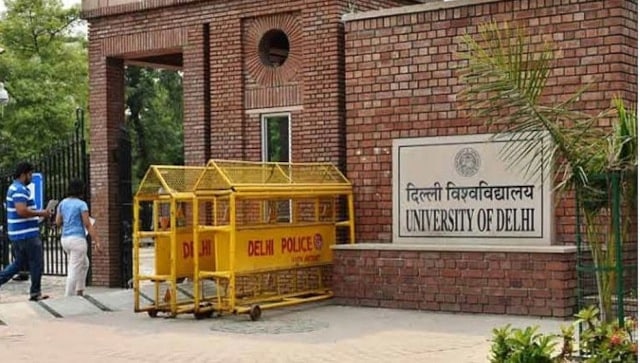 |
|
The UGC Draft Regulations 2025 represent a significant escalation in the ongoing erosion of academic freedom in Indian higher education. This follows a decade of policy interventions aimed at corporatizing universities, transforming them from institutions providing a public good to transactional entities focused on maximizing revenue. The National Education Policy (NEP) 2020, coupled with the gradual phasing out of UGC grants and the introduction of the HEFA loan system, has created a precarious situation for universities, pushing them towards a potential collapse. The current draft regulations exacerbate this issue through several key provisions.
The most alarming change involves the selection of Vice Chancellors. The opening of this position to candidates from outside academia, vaguely defined as 'industry', significantly compromises the integrity of university leadership. This dilution of qualifications raises serious concerns about the potential for individuals lacking relevant educational experience to lead institutions of higher learning. This move, coupled with the emphasis on 'notable contributions' in clause 3.8, paves the way for increased privatization of universities.
The standardization of the search-cum-selection committee composition undermines the founding principles and historical context of universities. The inclusion of a gubernatorial appointee as chair grants veto power to a non-academic entity, directly contradicting the principle of institutional autonomy. This centralized control over appointments stifles the democratic processes that are essential for maintaining academic independence.
The purported streamlining of faculty promotions, achieved by removing the mandate of CARE-listed journal publications, creates a new set of arbitrary criteria. This disproportionately affects humanities and social sciences faculty, demanding they engage in activities like developing teaching labs, starting businesses, or securing funded consultancy work. Science and mathematics faculty face the equally unreasonable expectation of linking their courses to 'Indian knowledge systems.' This arbitrary shift of focus detracts from the core academic responsibilities of teaching and research.
Further eroding faculty autonomy, the draft regulations shift promotion processes from a time-bound system to one dependent on the fulfillment of nine 'notable contributions,' as outlined in Section 3.8. These contributions, including fundraising, lab development, and online content creation, prioritize entrepreneurship over teaching and research. This not only undermines the democratic structure of promotions but also centralizes decision-making power, leading to subjective and potentially biased evaluations. The elimination of Categories I and II of API/APAR templates further reinforces the devaluation of teaching, learning, and evaluation in the promotion process.
The bifurcation of service conditions into regulations and guidelines with differing legal weight creates avenues for arbitrary manipulation by institutional administrators. Critical issues like direct teaching workload are relegated to guidelines, leaving workload calculations to the discretion of institutional management. While mandating an eight-hour workday and physical presence, the regulations fail to account for research time, effectively silencing academic research and undermining the very essence of higher education. This lack of defined workload norms introduces disparities among teaching staff and institutions, raising questions about the UGC's commitment to maintaining standards.
The most egregious aspect is Section 3.8, which renders traditional classroom teaching irrelevant for recruitment and promotions. At least four of the nine ‘notable contributions’ are mandatory for any direct recruitment or promotion, none of which directly relates to the core work of teaching. This incentivizes activities external to teaching, turning universities into entrepreneurial hubs rather than centers of learning and research. The process is further centralized, with a single board deciding the fulfillment of these criteria, undermining any democratic process in determining promotions and recruitment.
The threat of punitive action in Clause 11.0 for violations of the regulations, coupled with the finality of the UGC’s interpretation in Clause 12.0, represents a draconian move to suppress all democratic functioning within universities. The vague nature of these ‘violations’ allows for arbitrary interpretation and coercive actions against teachers and institutions. The possibility of debarment from UGC schemes, the removal of degree-granting authority, and even removal from the list of recognized HEIs represents an extreme overreach of power.
In conclusion, the UGC Draft Regulations 2025 represent a concerted attack on academic freedom and the very foundations of higher education in India. The proposed changes undermine institutional autonomy, devalue the role of teaching and research, and concentrate power in the hands of a small group. These regulations necessitate collective resistance to safeguard the democratic functioning of universities and uphold the rights of students and teachers as primary stakeholders.
Source: Why the UGC Draft Regulations Amount to a Fresh Assault on Academic Freedoms
